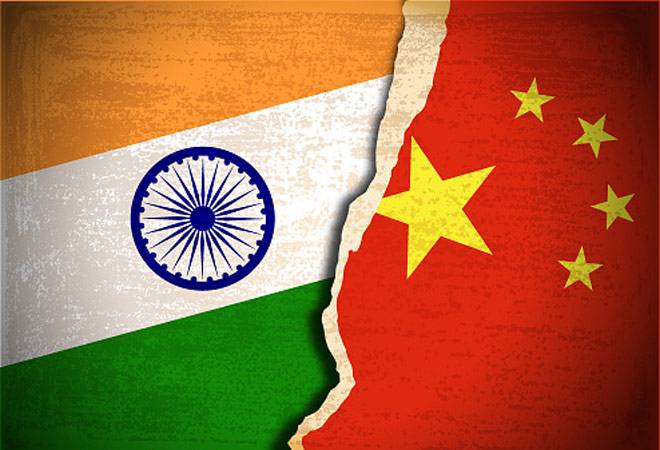This article is authored by Akash Krishnan, from ICFAI Law School, Hyderabad. It discusses in detail the legal regime surrounding trade laws in India, the Indo-China trade disputes and how India is emerging as a global leader in trade.
Table of Contents
Introduction
According to the Cambridge dictionary, trade is defined as “the activity of buying and selling, or exchanging, goods and/or services between countries and people.” The most vital component of trade is, without money or some other consideration we cannot trade.
There are 2 types of trade – Home or domestic trade and foreign trade. Domestic trade includes wholesale trade and retail trade. Foreign trade includes imports, exports, and entrepot trade. Trade law works upon the bilateral trade contracts and agreements which consist of regional trade agreements or multinational trade agreements. Each one of these has its procedures of policy, history, and dispute settlement authorities.
Everything has its pros and cons, same is the case with “boycotting china”. It is rightly said that it is better to stand alone than stand with someone who is working against you. So, it is very appropriate to boycott China and its products. This will have a major impact on trade as we have a habit of seeing a label that says “Made in China”.
The scope of the paper is as follows:
- From where did the Indo China issue start and what agreement happened between the two nations?
- What are the Indian trade laws?
- Why at this time the clashes have outraged more between the two nations?
- Way to self-reliant India
Legal regime of trade laws
Customs Act, 1962
Section 11 of the Act – Power to ban the importation or export of goods.
Where the Central Government is satisfied that it is appropriate to do so for any of the purposes stated in Clause (2), it may prohibit, by notification in the Official Gazette, the importation or exporting goods of any type specified, whether absolute or subject to such conditions (to be satisfied before or after clearance) as may be defined in the notification.
The Foreign Exchange Management Act (FEMA)
The Foreign Exchange Management Act, 1999 (FEMA) is a law of the Parliament of India to reform and amend the foreign exchange law to facilitate international trade and payments and encourage orderly transactions.
It was an Act that was enacted in Parliament’s winter session in 1999, replacing the Foreign Exchange Regulation Act 1973. This Act aims to render criminal crimes relevant to foreign exchange offences. It applies to all of India.
The Goods and Services Act, 2017
The GST Act was introduced in India on 01-07-2017 and for our country, it is a new Act. Section 11 of the CGST Act authorizes the Government to grant exemptions in the public interest on the advice of the GST Council.
Any limitation on the free flow of trade is an obstacle to commerce. Trade barriers may be either tariff barriers or non-tariff barriers which are barriers to trade other than tariff barriers.
Import licensing
India upholds a non-tariff regulation on three product categories: expressly forbidden or prohibited items.
Countervailing and anti-dumping controls India has been introducing from time to time to shield domestic producers from dumping. In several cases, India’s enforcement of its anti-dumping policy created questions about transparency and due process.
Export subsidies and domestic assistance
India has many export subsidy schemes, including tax exemptions for certain export-oriented firms and exporters in Special Economic Zones.
State’s power to control trade and exchange
Article 304(a) of the Indian Constitution allows the State to impose any tax on goods imported from another State where similar products in that State are subject to similar taxation to differentiate between products so imported and goods produced or manufactured in that nation. In Madhya Pradesh vs. Bhailal Bhai (1964) state of law levied sales tax on imported tobacco but was not subject to such sales tax at the local level. The Court repealed the tax as discriminatory. Clause (2) of this Article authorizes the State to enforce such fair restrictions on the freedom of travel, trade, and exchange as may be necessary for the public interest. And an amendment can be adopted in the Legislature of State for that reason without the President’s previous approval. Under Article 304(b), a law passed by a State to control inter-state exchange and exchange shall meet the following time conditions
The President’s previous affirmation must be obtained;
- The law shall be in the interest of the public and
- Restrictions imposed by such legislation shall be fair. (Faisal, 2018)
Indian trade laws
The export and import in India are governed by the Foreign Trade (Development and Regulation) Act 1992. The Act regulates foreign trade facilitating imports and exports to help in formulating an Export and Import (EXIM) Policy and also amend the same from time to time. This provides the Central Government to restrict, control, or put embargoes for specified goods to be exported or imported between China and India. India and China both being members of the World Trade Organization also follow the General Agreement in Trades and Tariffs (GATT) and General Agreement on trades in services (GATS), hence WTO also serves as an international guideline for trade with China.
Domestic trade policy
India has a lot of challenges in the matter of trade policy – the worldwide monetary economic slowdown, expanding protectionism, the slowed-down super economic accords that could in time be restored, and maybe progressively significant, and its domestic distractions. For India to accomplish its strategic goals, the legislature and industry, especially the assembling part, must get ready for circumstances and more prominent commitment in an advancing multilateral exchange field. India’s needs ought to incorporate taking measures to adjust to worldwide guidelines and supporting the World Trade Organization (WTO) to relaunch multilateral exchange. In research, it was concluded that India needs a very bold and imaginative trade policy with a wide range of consultations with the WTO. India’s current trade policy strengthens the make in India initiative. Its Foreign Trade Policy (FTP) is a source to lay out the fundamental structure and strategy for encouraging exports and trade. It is reviewed from time to time for adapting to changes in the international and domestic market. Current trade policy aims to increase the country’s share of trade from 2.1 % to 3.5% and to increase exports.
Indo-China issues and the agreement pact
India and China have had tense relations with each other and the major reason for this issue is the Line of Actual Control. LAC separated Indian territory and Chinese territory through the demarcation of a thin line. LAC is a disputed area referred to as the Sino-India Border Dispute. This demarcation border, i.e LAC, was formed after the Indo-China war in 1962. Whenever it comes to border settlement, the Chinese have always turned to answer with their guns, creating conflict over the position of LAC. So, to resolve this entire conflict on the Line of Actual Control, both India and China came together and decided to sign a pact in 1993, which is known as Maintenance of Peace and Tranquility along the Line of Actual Control, 1993. The major purpose of this pact was to bring peace, harmony, and friendly relations between the two nations.
Why clashes are more outrageous now
Now the centre of this particular controversy is the line of actual control in the western sector of India and China. The two major flashpoints of the conflict are in the Galvan valley and the fang wall lake. These regions are located on the right at the edge of the line of actual control. The Galwan valley sits between the steep mountains that are located beside the Galvan River. The river has its origins in the Excite chain which is on the Chinese side of the line of actual control the Galvan River flows west and then joins the chakra. Until now the accepted notion was that while most of the Galwan is located in the Chinese-controlled territory, its western tip and confluence point to the shock river lies on the Indian side. Now going by this acceptance, the Galwan Valley quite clearly falls in the Indian-controlled region, and never before in the past has there ever been any dispute of China claiming sovereignty over the Galwan Valley as it is presently doing.
China for the first time has now laid claim to sovereignty of the entire Galway Valley; the question, of course, is why and why now. According to many analysts, it is being said that China is bothered by India building up its infrastructure in the Galwan sector now. India has built up the 224 kilometres long road to give easier access to only the northernmost corner of the Indian territory in Ladakh. It also houses India’s highest landing strip along with this major road. India has also built a network of feeder roads as well and all these roads made India’s access to the exciting chain easier and China is quite obviously feeling anxious now. Remember the 37,000 square kilometre land of oxygen was illegally captured by the Chinese in the war of 1962 and India claims the entire Excite chain as a part of its territory. Now the Chinese are even laying claims on the whole of Galwan Valley. Right now, claims which India is termed as unacceptable and untenable are to the southeast of The Galwan Valley lies the Pangong lake. This is the second flashpoint in the standoff. The line of actual control passes right across the lake which lies on the West-East axis.
Though India and China perceive it to be different towards the northern end of the lake. The eight mountain bridges are usually referred to as the fingers; these are described as eight fingers aligned one after the other. The issue here is about the claims of these mountain ridges or fingers. India lays claim until finger 8 patrolled until finger 8 while China says that it lays claim until finger 4. Before the standoff, the Indian troop’s path held until at least finger four but now the Chinese forces have established camps at finger four of the mountain bridges cutting off Indian patrols – within finger for this step by the Chinese undermines India’s claims of patrolling until finger eight. The areas launched a strong protest with the Chinese. The government has said that China is unilaterally trying to change the status quo and has called this simply unacceptable.
Impact on Indian trade
The Indian Government through a notification by the Press Information Bureau banned 59 Chinese apps under Section 69 A of the Information Technology Act which empowers the state to issue direction for blocking public access of any information through any computer resource, read with the Blocking Rule which further comprehends the procedure to be followed for the blocking. This was done by the Indian Government on account of protecting the integrity and sovereignty of India. The Supreme Court in 2015 in Shreya Singhal vs Union of India upheld the validity of Section 69 A as well as the blocking rules when done on reasoned orders. China after the app-ban issued a statement saying that India should abide by WTO rules. The WTO rule which may be pertinent here is the General Agreement on Trade in Services which calls for fair trade practices in services, but even that has security exceptions which India may take up. Trade figures have suggested that India is one of the biggest importers of Chinese consumer goods. India has a huge trade deficit with China – the largest with any country.
According to the Ministry of Commerce and Industry in the year 2018-19, India accounted for the import of seventy billion dollars from China where the imports accounted only for sixteen billion dollars which resulted in fifty-three-billion-dollar trade deficits. Earlier India-China was referred to as trading partners but this was only from the China side as the wheel of trade was on the China side as India was heavily dependent on Chinese goods.
The road towards a self-reliant India
The Government has taken several steps to encourage small businesses that were previously impacted and downtrodden by the Chinese goods. Moreover, India has banned several Chinese apps under the Information Technology Act on account of protecting sovereignty which has a major economic impact on Chinese Tech Giants which sourced major business in India.
Along with this to help the economy grow, the government has updated several laws to benefit the Indian economy. For instance, the introduction of labour codes simplifies labour practices in the industries, sets forth several disinvestments of government facilities, consolidation of several public sector banks, and introduces the highly effective Insolvency and Bankruptcy Code, 2016 for such industries.
An Rs. 20 lakh Crore Economic Stimulus package has been announced and gives a clarion call for ATMA NIRBHAR BHARAT, SELF RELIANT INDIA.
- Stressed on 5 pillars – Infrastructure, modernizing system base technology, building a strong Economy, use of vibrant Demography, and Demand. Land, Labour, Liquidity, and Laws.
- Big boost to Small Industry and Business-Rs 5.94 Lakh Crore Stimulus- SMES, NBFCS expanded, EPF contribution reduced.
- Bringing neighbours together.
- Extraordinary International Summits.
- Global Tenders disallowed up to Rs 200 Crore.
- Increase FDI – Cutting Red Tape.
Conclusion
The current Indo-China issue has heavily impacted India. This impact is positive as India has turned its shoes for self-reliance. After the Galvan Valley set off, India is off to several path-breaking reforms making India one of the most competitive economies in the world.
Although the path may belong, the pace of reform has increased significantly. As of now in this global pandemic, India’s development has looped many countries to make India their first choice of investment. And with the goal to reach a 5 trillion-dollar economy self-reliant India will find its way around.
Reference
- https://commerce.gov.in/writereaddata/uploadedfile/MOC_637036322182074251_Annual%20Report%202018-19%20English.pdf
- https://indianexpress.com/article/explained/line-of-actual-control-where-it-is-located-and-where-india-and-china-differ-6436436/
- https://en.humsub.com.pk/1025/facts-behind-india-china-border-dispute/
- https://journals.sagepub.com/doi/pdf/10.1177/000944556600200103
- https://www.thehindu.com/opinion/op-ed/how-india-can-become-self-reliant/article31681288.ece
- https://www.business-standard.com/article/opinion/the-place-of-self-reliant-india-in-south-asia-120052601720_1.html
- https://www.strangemilitarystories.com/2020/06/india-china-border-Pasngong-lake-Galwan-valley-kongka-pass.html
LawSikho has created a telegram group for exchanging legal knowledge, referrals and various opportunities. You can click on this link and join:
https://t.me/joinchat/L9vr7LmS9pJjYTQ9
Follow us on Instagram and subscribe to our YouTube channel for more amazing legal content.
 Serato DJ Crack 2025Serato DJ PRO Crack
Serato DJ Crack 2025Serato DJ PRO Crack











 Allow notifications
Allow notifications



